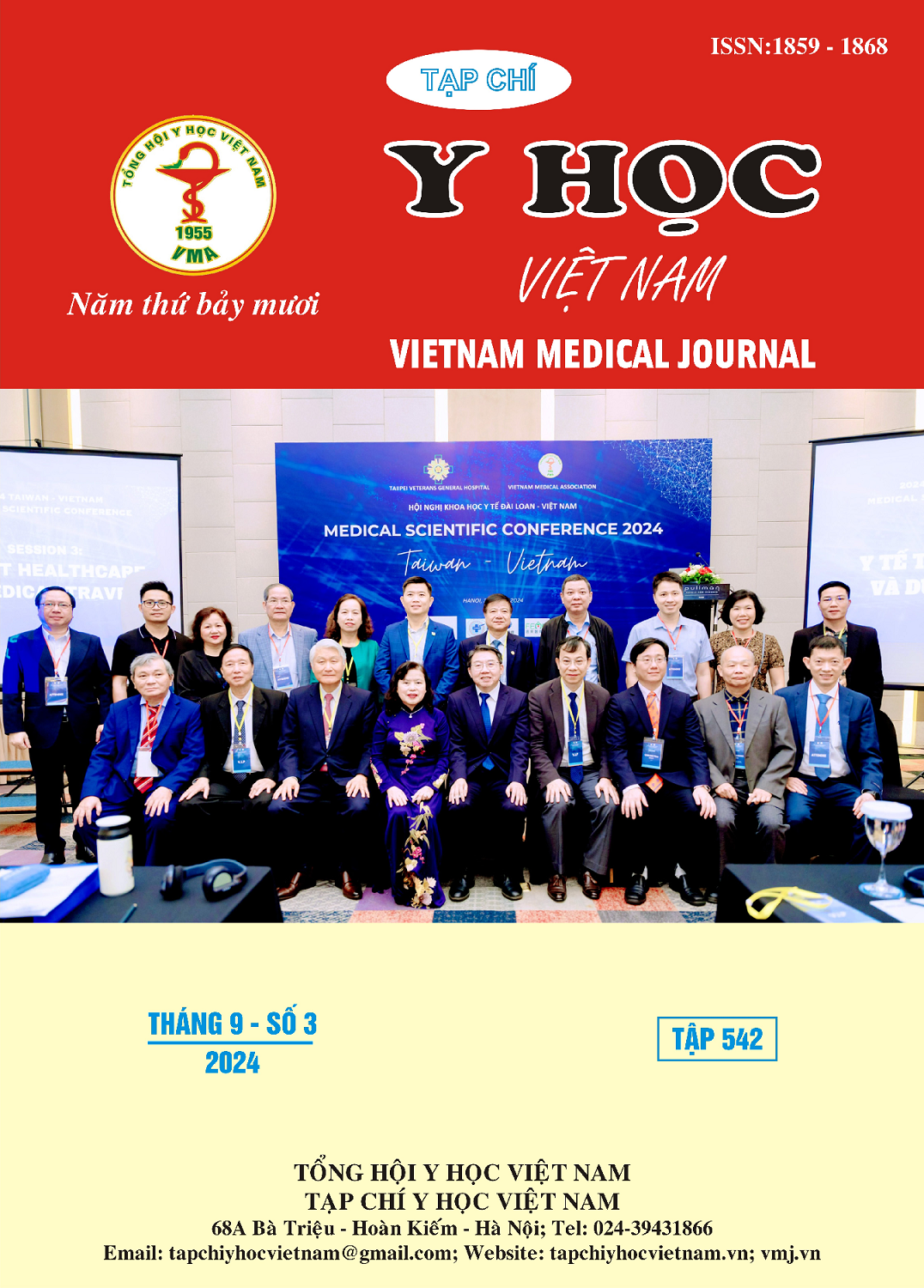THE RESULTS OF ENDOVASCULAR INTERVENTION IN TREATMENT OF TASC B FEMORAL-POPLITEAL ARTERIAL OCCLUSION
Main Article Content
Abstract
Objectives: Evaluation of endovascular interventional results in treatment of TASC B femoral-popliteal arterial occlusion. Methods: Retrospective - case series deciptive study conducted at Cardiovascular and Thoracic Surgery Department, Thong Nhat Hospital. Ho Chi Minh city. Results: From Oct 2022 to Oct 2023, there were 58 cases of chronic arterial occlusion of lower extremities TASC B treated with revascularization by endovascular intervention, average age was 76 ± 10 (42-93); male /female: 40/18; Location of injuries: 36 cases (62.1%) superficial femoral artery, 16 cases (27.6%) popliteal artery, 6 cases (10.3%) 1/3 superior superficial femoral artery and below the knee. Intervention methods: 51 cases (87.8%) antegrade, 7 cases (12.1%) antegrade combined with retrograde. Average intervention time 132.6 ± 28.4; 2 cases (3.45%) complications of hematoma at the needle puncture site, which self-limited after compression bandage. The overall technical success rate in the study group was 54/58, equivalent to 93.1%. The study sample had 11 limbs with ulcers and necrosis before intervention, after 6 months of follow-up, 8 limbs (72,7%) had healed ulcers, 2 limbs had not healed but the wound size had decreased significantly, 1 patient had to above the ankle amputation. Conclusion: Endovascular intervention in recanalization of TASC B femoral-popliteal artery occlusion has a highly successful technical result (93.1%), femoral-popliteal arterial lesion has a 100% success rate. Endovascular intervention in treatment of TACS B classification showed low complications, and significant improvement in clinical symptoms.
Article Details
Keywords
Endovascular intervention, chronic femoral – popliteal arterial occlusion.
References
2. Bosiers M, Peeters P, D'Archambeau O, et al. AMS INSIGHT--absorbable metal stent implantation for treatment of below-the-knee critical limb ischemia: 6-month analysis. Cardiovasc Intervent Radiol. 2009/05// 2009; 32(3): 424-435. doi:10.1007/s00270-008-9472-8.
3. Fukase T, Dohi T, Kato Y, et al. Long-term clinical outcomes and cause of death after endovascular treatment for femoropopliteal artery lesions. 2021;77(4):417-423.
4. Hùng TĐ, Nghĩa DV. Hiệu quả điều trị can thiệp nội mạch tổn thương động mạch đùi-khoeo ở bệnh nhân bị bệnh động mạch chi dưới mạn tính. Tạp chí Y Dược học quân sự. 2015 2015;(4):125-129.
5. Horie K, Tanaka A, Taguri M, Tada N. Single-Center Contemporary Clinical Outcomes after Endovascular Treatment in Patients with De Novo Femoropopliteal Lesions between 2017 and 2019. Annals of Vascular Diseases. 2023/03/25/ 2023; 16(1):38-45. doi:10.3400/avd.oa.22-00081
6. Sigterman TA, Bolt LJJ, Krasznai AG, et al. Loss of kidney function in patients with critical limb ischemia treated endovascularly or surgically. J Vasc Surg. 2016/08// 2016;64(2):362-368. doi:10.1016/j.jvs.2016.03.409
7. Văn H. Đánh giá kết quả sớm can thiệp nội mạch trong điều trị bệnh động mạch chi dưới mạn tính tại Bệnh viện Tim Hà Nội. Tạp chí Phẫu thuật Tim mạch và Lồng ngực Việt Nam. 2021 2021:212-219.
8. Yu X, Zhang X, Lai Z, et al. One-year outcomes of drug-coated balloon treatment for long femoropopliteal lesions: a multicentre cohort and real-world study. BMC Cardiovasc Disord. 2021/07/03/ 2021;21(1):326. doi:10.1186/ s12872-021-02127-x


